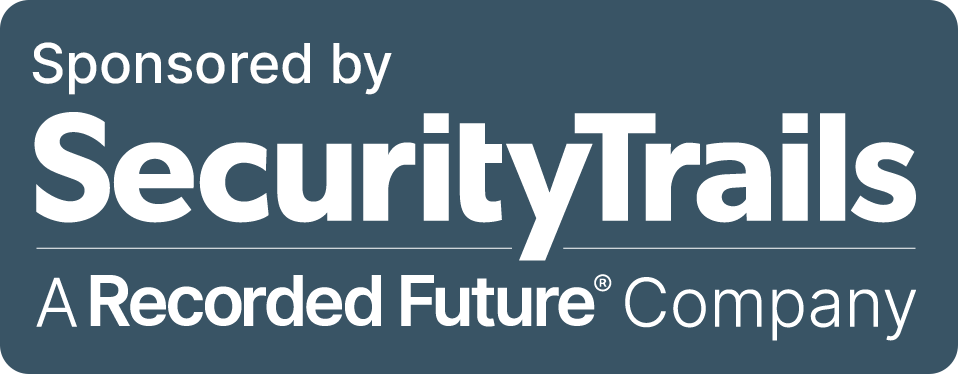www.redhat.com
Open in
urlscan Pro
2a02:26f0:fb:5aa::d44
Public Scan
Submitted URL: https://app.engage.redhat.com/e/er?s=1795&lid=240283&elqTrackId=58e21133163d4ed088ddd1eea89bd498&elq=ef68214a30184dc4971075989...
Effective URL: https://www.redhat.com/en/blog/aiml-edge-and-serverless-computing-top-priority-list?sc_cid=7013a000002qDjNAAU
Submission: On March 16 via api from SE — Scanned from DE
Effective URL: https://www.redhat.com/en/blog/aiml-edge-and-serverless-computing-top-priority-list?sc_cid=7013a000002qDjNAAU
Submission: On March 16 via api from SE — Scanned from DE
Form analysis 3 forms found in the DOM
POST /en/search/node
<form class="search-form" autocomplete="off" action="/en/search/node" method="post" id="redhat-www-solr-search-box" accept-charset="UTF-8">
<div>
<div class="container-inline form-wrapper" id="edit-basic">
<div class="form-item form-type-textfield form-item-keys">
<label class="element-invisible" for="edit-keys">Enter your keywords </label>
<input maxlength="128" size="15" placeholder="Enter your search term" type="text" id="edit-keys" name="keys" value="" class="form-text">
</div>
<div class="form-actions form-wrapper" id="edit-actions"><input type="submit" id="edit-submit" name="op" value="Search" class="form-submit"></div>
<div class="search-autocomplete__container"></div>
</div><input type="hidden" name="form_build_id" value="form-KyqlCzoVDPeiJaFXnFDe1ibiUPmwkq_P4nulpYq_3PM">
<input type="hidden" name="form_id" value="redhat_www_solr_search_box">
</div>
</form>POST /en/search/node
<form class="search-form" autocomplete="off" slot="mobile-search" hidden="" action="/en/search/node" method="post" id="redhat-www-solr-search-box--2" accept-charset="UTF-8">
<div>
<div class="container-inline form-wrapper" id="edit-basic--2">
<div class="form-item form-type-textfield form-item-keys">
<label class="element-invisible" for="edit-keys--2">Enter your keywords </label>
<input maxlength="128" size="15" placeholder="Enter your search term" type="text" id="edit-keys--2" name="keys" value="" class="form-text">
</div>
<div class="form-actions form-wrapper" id="edit-actions"><input type="submit" id="edit-submit--2" name="op" value="Search" class="form-submit"></div>
</div><input type="hidden" name="form_build_id" value="form-CTHSX72r9dIpSAo5CQ6M52xMrXXQtjt7Il7Bv2r0dNo">
<input type="hidden" name="form_id" value="redhat_www_solr_search_box">
</div>
</form><form>
<div class="rh-search--component">
<label class="rh-search-label" for="search">Search all Red Hat blogs</label>
<input class="rh-search-field" required="" maxlength="128" size="15" placeholder="Search all Red Hat blogs" type="text" id="search" data-rh-search-input="" name="search" value="">
<div class="rh-search-clear" data-rh-search-clear="" tabindex="0"></div>
<button class="rh-search-link" data-rh-cta-type="button" type="submit" formaction="/en/blog/search-proxy" title=""> Search </button>
</div>
</form>Text Content
FEATURED LINKS
* Open hybrid cloud
* Support
* Developers
* Partners
* Start a trial
* Skip to content
Search
Enter your keywords
Enter your keywords
* Products
* Solutions
* Services & support
* Resources
* Red Hat & open source
* Featured links
* Open hybrid cloud
* Support
* Developers
* Partners
* Start a trial
English
SELECT A LANGUAGE
* 简体中文
* English
* Français
* Deutsch
* Italiano
* 日本語
* 한국어
* Português
* Español
English
Log in
Log in to your Red Hat account
Log in
Your Red Hat account gives you access to your member profile and preferences,
and the following services based on your customer status:
* Customer Portal
* Red Hat Connect for Business Partners
* User management
* Certification Central
Register now
Not registered yet? Here are a few reasons why you should be:
* Browse Knowledgebase articles, manage support cases and subscriptions,
download updates, and more from one place.
* View users in your organization, and edit their account information,
preferences, and permissions.
* Manage your Red Hat certifications, view exam history, and download
certification-related logos and documents.
Contact us
Log in / Register
SELECT A LANGUAGE
* 简体中文
* English
* Français
* Deutsch
* Italiano
* 日本語
* 한국어
* Português
* Español
Red Hat blog
BLOG MENU
Latest posts
By product
* Red Hat Enterprise Linux
* Red Hat Insights
* Red Hat OpenShift
* Red Hat Ansible Automation
* Red Hat OpenStack Platform
* Red Hat Cloud Storage and Data Services
* All products
By channel
* Red Hat News
* Red Hat Services Speak
* Cloud native computing
* Red Hat Security
* Open Hybrid Cloud
* Management and automation
* All channels
--------------------------------------------------------------------------------
AI/ML, EDGE AND SERVERLESS COMPUTING TOP PRIORITY LIST FOR THE YEAR AHEAD
January 6, 2022Deb Richardson
Share
* Back to all posts
Tags:Edge Computing, Open Outlook
--------------------------------------------------------------------------------
In Red Hat’s 2022 Global Tech Outlook report, more organizations indicated they
are considering or planning to use most types of emerging technology. Here,
"emerging technologies" include leading innovations such as artificial
intelligence and machine learning (AI/ML), internet of things (IoT), blockchain
and edge.
From June through August 2021, we surveyed 1,341 information technology (IT)
leaders and decision makers to learn about their digital transformation
journeys, their IT and non-IT funding priorities for the coming year, and the
types of infrastructure they’re using to run their applications.
TOP EMERGING TECHNOLOGY WORKLOADS
We asked study participants, "What emerging technology workloads are you most
likely to consider using in the next 12 months (or are currently planning on
using)?" Respondents were asked to select all answers that applied. Here’s what
they had to say.
The results aren’t terribly different compared to last year’s survey.
This year there continues to be a large and growing interest in AI/ML, with 53%
of respondents saying that this is one of their top priorities in the coming
year, up 3% from last year.
Similarly, 49% of organizations said that Internet of Things (IoT) is a top
priority in 2022, which skyrockets to 61% if you consider IoT and edge together.
Combined, this is 5% higher than last year’s totals.
What’s notable is that the largest year-to-year jump is in serverless, or
Function-as-a-Service (FaaS) computing. Forty percent of respondents said this
is one of their top priorities for the coming year, up 6% over our 2020 survey.
HOW RED HAT CAN HELP
Red Hat offers an array of tools and services that can help organizations
succeed in their emerging technology initiatives, including AI/ML, edge and IoT,
and serverless computing.
AI/ML
AI/ML is an important evolution in computer science and data processing that is
being adopted across a wide swathe of modern industries as they undergo digital
transformation. Faced with a massive and ever-expanding flood of data generated
by modern IT infrastructure and devices, organizations are finding it
increasingly difficult to collect, process and analyze.
This is where AI/ML comes in, giving organizations a way to extract value from
the flood of data to deliver business insights, automate tasks and advance
system capabilities.
You can build a hybrid cloud platform for AI/ML workloads using Red Hat products
such as Red Hat Enterprise Linux (RHEL), Red Hat OpenShift and Red Hat
Middleware. Additionally, Red Hat partner solutions can help you innovate more
quickly.
If you don’t want to roll out your own hybrid cloud, Red Hat OpenShift Data
Science is a managed cloud service that gives data scientists and developers a
way to rapidly develop, train, test and iterate on machine learning and deep
learning models in a fully supported sandbox environment. It gives you the
ability to quickly deploy an integrated set of open source and partner tools to
perform AI/ML modeling without having to wait for infrastructure provisioning.
Red Hat Consulting is also available to help organizations meet challenges like
the adoption of DevOps and ML best practices, and an AI/ML Red Hat Open
Innovation Labs residency is also available to help you accelerate your data
science initiatives.
EDGE AND IOT
The Internet of Things (IoT) is made up of smart devices connected to a network.
IoT creates new opportunities to gather data in disparate physical locations,
and is directly related to the concept of edge computing.
Edge computing is a distributed computing model in which data is captured,
stored, processed and analyzed at or near the physical location where it is
created. Pushing compute power out to these locations enables a number of
application benefits, including decreased latency, better reliability, and the
flexibility and scalability of hybrid cloud computing.
Edge computing improves speed and performance by eliminating the need to shuffle
data back and forth across (sometimes slow and unreliable) network connections.
Data can be processed and insights gained more quickly, particularly in
locations with intermittent connectivity. Regulatory and compliance requirements
are also simplified because data can be held or scrubbed on location, rather
than being shipped unprocessed over the internet.
With so much added complexity, however, there are challenges to edge computing.
The Red Hat Edge portfolio addresses by giving organizations a cohesive strategy
for building and managing applications across hybrid, multi-cloud and edge
locations.
The portfolio includes Red Hat Enterprise Linux, Red Hat OpenShift and Red Hat
Ansible Automation Platform. Red Hat Consulting can conduct an Edge Platform
Architecture Review and suggest how to use the portfolio to enhance or scale
your edge solution.
As with AI/ML, a Red Hat Innovation Labs residency is available where you can
bring IT and operational technology (OT) teams together and develop
collaborative approaches to building these complex edge systems.
SERVERLESS COMPUTING AND FAAS
Function-as-a-Service (FaaS) computing involves building and running
applications that don’t require server management. Instead, applications are
bundled as one or more functions, uploaded to a platform, and then automatically
executed and scaled as needed. FaaS is a way to implement serverless computing.
Developers only have to deploy their applications, and don't have to worry about
where they’re run, how they’re run, how the network is handled or any of that
other stuff. There are still servers, of course, but they are abstracted away
from app development, streamlining the application development process.
Red Hat OpenShift Serverless can be used to build, deploy and run event-driven
applications that will start based on an event trigger and scale resources as
needed. Backed by Knative, OpenShift Serverless applications can run anywhere
Red Hat OpenShift is installed.
CONCLUSION
If you’re among the industry leaders planning to deploy any of these emerging
technologies in the year to come, Red Hat can help. Learn more about our product
offerings, and make sure your teams have the skills they need to deploy emerging
technologies through our training and certification programs.
LEARN MORE
* Red Hat 2022 Global Tech Outlook report
* Red Hat Edge
* Red Hat Edge Validated Patterns
* AI/ML on OpenShift: How Red Hat can help you operationalize your models
* Why and When you need to consider OpenShift Serverless
--------------------------------------------------------------------------------
ABOUT THE AUTHOR
DEB RICHARDSON
Contributing Editor
Deb Richardson is a Contributing Editor for the Red Hat Blog, writing and
helping shape posts about Red Hat products, technologies, events and the like.
Richardson has over 20 years' experience as an open source contributor,
including a decade-long stint at Mozilla, where she launched and nurtured the
initial Mozilla Developer Network (MDN) project, among other things.
Read full bio
> If you’re among the industry leaders planning to deploy any of these emerging
> technologies in the year to come, Red Hat can help.
>
> Deb Richardson
>
> Contributing Editor
Share this on Twitter
Search all Red Hat blogs
Search
Subscribe via RSS
Related posts
* RED HAT CONTRIBUTES TOWARDS INNOVATIVE OPTICAL & WIRELESS NETWORK
TECHNOLOGIES
* RESULTS THAT SURPRISED US IN THE STATE OF ENTERPRISE OPEN SOURCE REPORT
* HOW RED HAT AND VERIZON ARE BUILDING THE HYBRID MOBILE EDGE TOGETHER
ABOUT
We’re the world’s leading provider of enterprise open source solutions, using a
community-powered approach to deliver high-performing Linux, cloud, container,
and Kubernetes technologies. We help you standardize across environments,
develop cloud-native applications, and integrate, automate, secure, and manage
complex environments with award-winning support, training, and consulting
services.
* Company information
* Jobs
* Locations
* Development model
* Events
* Newsroom
* Blog
* Cool Stuff Store
* Diversity, equity, and inclusion
*
*
*
*
*
PRODUCTS
* Red Hat Ansible Automation Platform
* Red Hat Enterprise Linux
* Red Hat OpenShift
* Red Hat OpenShift Data Foundation
* Red Hat OpenStack Platform
* See all products
TOOLS
* My account
* Customer support
* Partner resources
* Developer resources
* Training and certification
* Learning community
* Red Hat Ecosystem Catalog
* Resource library
TRY, BUY, SELL
* Product trial center
* Red Hat Store
* Red Hat Marketplace
* Buy online (Japan)
* Find a partner
* Contact sales
* Contact training
* Contact consulting
COMMUNICATE
* Contact us
* Feedback
* Social
* Red Hat newsletter
© 2022 Red Hat, Inc.
* Privacy statement
* Terms of use
* All policies and guidelines
* Digital accessibility
* |Cookie-Präferenzen

